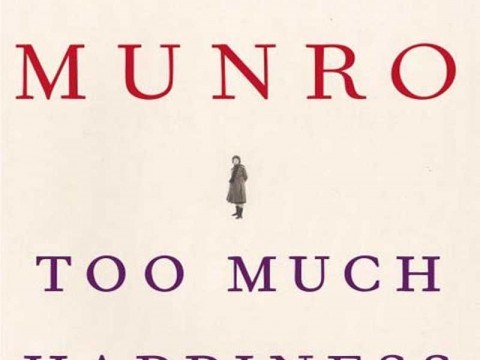Reviewed by Paula Shackleton
Too Much Happiness
McClelland & Stewart/Douglas Gibson Books
320 pages, $32.99
Alice Munro's 14 th book, Too Much Happiness , is a collection of 10 short stories. The first story is about a girl who is befriended by a male orderly during visits with her mother in the hospital. The mother has surgery and dies. The couple's relationship turns romantic and soon the girl is married with three children. The reader is immediately given a sense of foreboding about the scenario. The husband insists upon home-schooling their children and all the details of the family's life are controlled by his growing oppressive behaviour. When the inevitable catastrophe ensues the reader is not rewarded with respite from the harmful husband. No, our stoic protagonist continues to be snared in the mind game that leads her to take three buses and hours of commute to visit him in the criminal insane asylum. When she finally concludes that the visits are probably not a good idea for her own sake, he manages to continue his hold over her through letters. The whole experience is like watching zombies walk toward a precipice where the reader feels the urge to push the characters off into the abyss, or failing that, to jump.
This is the power of Alice Munro. Once you've read one story, you're hooked and have to read them all because the writing is like no other. It's spare and simple, but at the same time as powerful as a kick to the solar plexus.
These are people who by outward appearance seem normal if not just a little off. It's as though you've wondered into Alice's rural hometown in Ontario and had the drapes pulled back on the neighbours' houses revealing all the dark, dirty secrets taking place in their living rooms. You don't want to read, but you can't help yourself. You turn out the light but the story keeps going around in your head until you finally get up, sneak out and put a housecoat on, make a hot Ovaltine and read the next one. It's not a reward, and the next one doesn't make you feel any better or take you to a different place with dewdrops and rainbows and happy people.
So why read it, I bet you're asking. It's not because of the national and international literary awards and life-long body of work awards. It's not because Jonathan Franzen excoriates in red ink on the back dust jacket to "read Munro, read Munro" (well that might have lured a few reluctant browsers to trot up to the cashier with their purchase).
I was interested to see a picture of the author on the back cover taken, so the caption below says, in the late '80s when she must have been in her 50s. A curly dark-haired woman with a broad smile looks directly at the camera. She's situated in a garden almost enclosed by a leafy shrub or tree whose dark shadow obscures where her hair stops and the foliage begins. She's wearing a flowered top. Her face has the first creases of age that disappear when the muscles are relaxed but will soon remain ingrained even at rest. She's beautiful. I imagine that she enjoyed having her picture taken or knew the photographer well enough that she was comfortable exposing this natural, gay emotion. (All the later pictures used by publicists and circulated to newspapers have a white haired old lady peeping at you with a look of, well, distrust.)
Perhaps we were never meant to see this picture? Perhaps this was a scrapbook item raided for the purpose of this 14 th book jacket that says, "Look, see when I was young and untouched by all you public?" If she threatened retirement before and came out with this opus, is she really using it as a kind of armour against all the speculation about the dark nature of the stories inside and what it all is supposed to mean?
Alice's competition on the Canadian literary diva scene, Margaret Atwood, argues that if a writer is not writing a story for the sake of telling a good yarn, then they're writing for entirely different reasons - a manifesto or something. Well this is some story-telling. Don't let the book wait until soft cover release. Do what the back cover says and settle yourself "safely inside the gates of Literature." (Yes, with a capital L.)
Whistler Reads' discussion of Too Much Happiness takes place Thursday, Sept. 24. For more information, visit www.bookbuffet.com .




